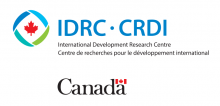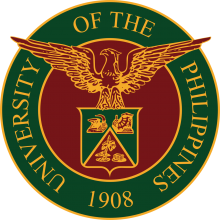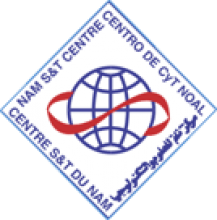Science
News

03 Jul 2007
Applications are invited for the annual Commonwealth Broadcasting Association Awards for Television and Radio programmes. Applications can be team or individual entries and all programmes or projects should have been broadcast for the first time or completed between October 2006 and July 2007.

01 Jul 2007
UPM scientists are researching the possibility of using "tapai ubi", or fermented tapioca, as a prevention against cancer. Preliminary tests indicated that seven types of cancer, including cervical, ovarian, breast and leukaemia, could be prevented by eating tapai ubi.

01 Jul 2007
Slope instability is a serious problem in many rapidly developing countries. The first technology incorporate slope monitoring and early warning system using geosynthetic material with the real time forecasting on the rainfall impact to the slope while the other is a new system developed for real time prediction of slope instability.

01 Jul 2007
Observing the motion of individual molecules trapped inside carbon nanotubes offers a direct look at the process of vision, reports a paper online this week in Nature Nanotechnology.

01 Jul 2007
Hsp90 inhibitors allow small cell lung cancer to die, What happened before the Big Bang?, A solid base for nitride semiconductors, The stress of gaining weight, Spermicide favors HPV infection, Genetic link between prostate cancer and type 2 diabetes, Male pheromone stimulates neurogenesis in the female brain.

01 Jul 2007
The first ever Award to acknowledge excellence in writing on rice and rice related issues in Asia. The deadline is September 1st, 2007

28 Jun 2007
Solutions to the Euler equations provide a means to study a wide range of physical phenomena, including natural disasters such as Hurricane Katrina, Scientists create a microemulsion of two ionic liquids and more.

28 Jun 2007
Summaries of newsworthy papers include Evolution: Good genes gender specific?, Interstellar chemistry: Blowing in the wind, Optics: Nanowire light source and Geochemistry: Silicon in the Earth’s core

26 Jun 2007
The symposium focuses on genomics and bioinformatics of influenza viruses, influenza transmission, human influenza, diagnosis, vaccine production and development, and its impact on socio-economy.

25 Jun 2007
EEPSEA is inviting researchers from Southeast Asia to submit proposals for the November Competition. The Deadline for proposal submission is August 1. The guidelines for research proposal could be downloaded from www.eepsea.org

24 Jun 2007
Summaries of newsworthy papers include Stellar weather, Omega 3 fatty acids may prevent eye disease, Tastier GM tomatoes?, How cancer cells keep their telomeres and Seeing histone tails specifically

22 Jun 2007
Universiti Teknologi MARA (UiTM) researchers prove their capability when grabs 3 Gold medals, 2 Silver medals and 1 Bronze medal in Invention & New Products Exposition 2007 (INPEX) exhibition. Known as America’s largest invention tradeshow, the event was held from 6th to 10th June 2007 at Expomart Hall, Pittsburgh, USA.

22 Jun 2007
The Global COE Program aims to support the establishment of world-class education and research centers within Japanese universities with an eye to raising their competitiveness to the highest world level.

22 Jun 2007
Pertanika is an international peer-reviewed leading journal in Malaysia which began publication in 1978. The journal publishes in three different areas- Pertanika Journal of Tropical Agricultural Science (JTAS); Pertanika Journal of Science and Technology (JST); and Pertanika Journal of Social Sciences and Humanities (JSSH).

21 Jun 2007
Summaries of newsworthy papers include Liquid mirror made for the Moon, Nitrification in the oceans — getting it right, Managing Amazonian rainforest regrowth, History of the Arctic Ocean and The rise of placental mammals

20 Jun 2007
The Philippine Intellectual Property Office issued last March 9, 2007 the utility model patent for the “Seaweed-based Air Freshener Gel” of Dr. Nemesio Montaño and Ms. Banaag Glorioso-Lajera. This utility model uses seaweeds as base material instead of the usual base in air freshener gels, which is carrageenan.

18 Jun 2007
Today Nature Publishing Group (NPG) and partner organisations launch Nature Precedings http://precedings.nature.com, a free online service enabling researchers to rapidly share, discuss and cite early findings.

18 Jun 2007
For IDRC, sharing the results of its research is a corporate imperative as much as a programming choice. Through this two-CD set, we extend the reach of our research programs and publications, including to regions of the world with low, unreliable, or nonexistent Internet access. Free copies available to order.

18 Jun 2007
This book presents conceptual and methodological issues related to the use of participatory development communication to facilitate participation amongst stakeholders in a variety of natural resource management initiatives. Each chapter presents in-depth experiences from Asia and Africa.

18 Jun 2007
Political, economic, and social change can allow research to inform change. IDRC shares its experience in eight countries - Algeria, Burma, Cambodia, Kenya, South Africa, the Southern Cone, Vietnam, and the West Bank and Gaza.

18 Jun 2007
The recommendations from the International Roundtable on Lightning Protection include designing protective devices suitable to local conditions, more research in high frequency earthing systems and protection technologies, country wide networked lighting detection system and an International Institute for Lighting Protection and Safety.

17 Jun 2007
New neurodegenerative mouse mutant, Optimizing calcium detection, International survey of human embryonic stem cell lines, Genetic engineering boosts biofuel yield from alfalfa, Genome sequences of Leishmania parasites, Empathy: A touching experience, Dialling down ‘natural’ antibody production, Fish tumours visualized by ultrasound

13 Jun 2007
Summaries of newsworthy papers include Saturn’s magnetosphere gets the Cassini treatment, Transients in the sky: Stellar puzzle, Why cold is such a pain, Human carbon footprint leaves a lasting mark on forests, Water on Mars revisited and The eyes have it

13 Jun 2007
The remains of a gigantic, surprisingly bird-like dinosaur have been uncovered in Inner Mongolia, China.

10 Jun 2007
Genetic variants predisposing to celiac disease, Regulating insensitivity to DNA damage, Getting specific with miRNA production, Following mitochondria in mouse neurons and Recombinant RNA

08 Jun 2007
Sarawak, Malaysia - Unimas (University Malaysia Sarawak) will collaborate with European and South-East Asian Partners to develop the Computerized Automative Technology Reconfiguration System for Mass Customization (CATER).

08 Jun 2007
Serdang, Malaysia - Australia's University of Newcastle and UPM explore cooperation avenues.

08 Jun 2007
Serdang, Malaysia - The main aim of the MOU includes promoting staff exchange programme, industry training for students, research collaboration, external examiner exchange and others.
Giants in history
Chinese biochemist Chi Che Wang (1894 - 1979), one of the first Chinese women to study abroad, advanced to prominent research positions at American institutions including the University of Chicago and the Northwestern University Medical School.
Ruby Sakae Hirose (1904 – 1960) was a Japanese-American scientist whose research contributed significantly to our understanding of blood clotting, allergies and cancer.
Chinese electron microscopy specialist Li Fanghua (6 January 1932 – 24 January 2020) facilitated the high-resolution imaging of crystal structures by eliminating interference.
Sálim Moizuddin Abdul Ali (12 November 1896 – 20 June 1987), commonly referred to as the Birdman of India, was the first person to conduct systematic surveys of birds from across India.
Haisako Koyama (1916 – 1997) was a Japanese solar observer whose dedication to recording sunspots – cooler parts of the sun’s surface that appear dark – produced a sunspot record of historic importance.
Michiaki Takahashi (17 February 1928 – 16 December 2013) was a Japanese virologist who developed the first chickenpox vaccine.
Toshiko Yuasa (11 December 1909 – 1 February 1980) was the first Japanese female physicist whose research on radioactivity shed light on beta decay – the process in which an atom emits a beta particle (electron) and turns into a different element.
Angelita Castro Kelly (1942-2015) was the first female Mission Operations Manager (MOM) of NASA. She spearheaded and supervised the Earth Observing System missions during its developmental stage.
Malaysia’s first astrophysicist, Mazlan binti Othman (born 11 December 1951) was instrumental in launching the country’s first microsatellite, and in sending Malaysia’s first astronaut, Sheikh Muszaphar Shukor, into space.
Known as Mr. Natural Rubber, chemist and researcher B. C. Shekhar (17 November 1929 – 6 September 2006) introduced a number of technical innovations that helped put Malaysia’s natural rubber industry on the world map.
Shinichiro Tomonaga (31 March 1906 – 8 July 1979), together with Richard Feynman and Julian Schwinger, was awarded the Nobel Prize in Physics in 1965, for their contributions to advance the field of quantum electrodynamics. Tomonaga was also a strong proponent of peace, who actively campaigned against the proliferation of nuclear weapons and promoted the peaceful use of nuclear energy.
South Korean theoretical physicist Daniel Chonghan Hong (3 March 1956 – 6 July 2002) achieved fame in the public sphere through his research into the physics of popcorn.
Japanese chemist Kenichi Fukui (4 October 1918 – 9 January 1998) was the first Asian scientist to be awarded the Nobel Prize in Chemistry. Together with Roald Hoffman, he received this honour in 1981 for his independent research into the mechanisms of chemical reactions.
Chinese palaeontologist, archaeologist and anthropologist Pei Wenzhong (January 19, 1904 – September 18, 1982) is regarded as a founder of Chinese anthropology.
Physicist Narinder Singh Kapany (31 October 1926 – 4 December 2020) pioneered the use of optical fibres to transmit images, and founded several optical technology companies. Born in Punjab, India, he worked at a local optical instruments factory before moving to London for PhD studies at Imperial College. There, he devised a flexible fibrescope to convey images along bundles of glass fibres.
Japanese physicist Ukichiro Nakaya (1900-1962) made the world’s first artificial snowflakes. He started his research on snow crystals in the early 1930s at Hokkaido University, where there is an unlimited supply of natural snow in winter. By taking over 3,000 photographs, he established a classification of natural snow crystals and described their relationship with weather conditions.
The field of solid-state ionics originated in Europe, but Takehiko Takahashi of Nagoya University in Japan was the first to coin the term ‘solid ionics’ in 1967. ‘Solid-state ionics’ first appeared in 1971 in another of his papers, and was likely a play on ‘solid-state electronics’, another rapidly growing field at the time.
Charles Kuen Kao (Nov. 4, 1933 to Sept. 23, 2018) was an engineer who is regarded as the father of fibre optics. His work in the 1960s on long distance signal transmission using very pure glass fibres revolutionized telecommunications, enabling innovations such as the Internet.
Chika Kuroda (24 March 1884 – 8 November 1968) was a Japanese chemist whose research focussed on the structures of natural pigments.
Motoo Kimura (13 November 1924 – 13 November 1994) was a Japanese theoretical population geneticist who is best remembered for developing the neutral theory of molecular evolution.
Meghnad Saha (6 October 1893 – 16 February 1956) was an Indian astrophysicist best known for formulating the Saha ionization equation which describes the chemical and physical properties of stars.
Sir Jagadish Chandra Bose (30 November 1858 – 23 November 1937) was a scientist and inventor who contributed to a wide range of scientific fields such as physics, botany and biology.
Osamu Shimomura (27 August 1928 – 19 October 2018) was a Japanese organic chemist and marine biologist who dedicated his career to understanding how organisms emitted light.
Subrahmanyan Chandrasekhar (19 October 1910 – 21 August 1995) was an Indian astrophysicist who studied the structure and evolution of stars.
Joo-myung Seok (November 13, 1908 – October 6, 1950) was a Korean butterfly entomologist who made important contributions to the taxonomy of the native butterfly species in Korea.
Mathematician Maryam Mirzakhani (12 May 1977 – 14 July 2017) was the first and only woman and Iranian to date to win the Fields Medal in 2014 for her work on curved surfaces.
Sir Chandrasekhara Venkata Raman (7 November 1888 – 21 November 1970) was an Indian physicist who performed ground-breaking research in the field of light-scattering.
Mohammad Abdus Salam (29 January 1926 – 21 November 1996) was a theoretical physicist and the first Pakistani to receive a Nobel Prize in science.
Srinivasa Ramanujan (22 December 1887 – 26 April 1920) was a math prodigy and widely considered one of India’s greatest mathematicians. Despite having almost no formal training in mathematics, he made substantial contributions to mathematical analysis, number theory, infinite series and continued fractions.
Gopalasamudram Narayanan Ramachandran (8 October 1922 – 7 April 2001) is best known for developing the Ramachandran plot to understand the structure of short chains of amino acids, known as peptides.
Hitoshi Kihara (1893 – 1986) was one of the most famous Japanese geneticists of the 20th century. One of his most significant contributions was identifying sex chromosomes (X and Y) in flowering plants.
Chien-Shiung Wu (31 May 1912 – 16 February 1997) was an experimental physicist who made several important contributions to nuclear physics. Wu worked on the Manhattan Project – a top-secret program for the production of nuclear weapons during World War II and helped to develop a process for separating uranium into U235 and U238.
Meemann Chang (born 17 April 1936) is a Chinese palaeontologist who studied the fossils of ancient fish to understand the evolution of life. By examining fossils, she uncovered new insights on how vertebrates, animals with a backbone, migrated from the sea and became adapted to live on land.
Bibha Chowdhuri (1913 – 2 June 1991) was an Indian physicist who researched on particle physics and cosmic rays. In 1936, she was the only female to complete a M.Sc. degree at the University of Calcutta.
Lin Lanying (7 February 1918 – 4 March 2003) was a Chinese material engineer remembered for her contributions to the field of semiconductor and aerospace materials. Lanying was born into a family who did not believe in educating girls and she was not allowed to go to school.
Japanese geochemist Katsuko Saruhashi developed the first method and tools for measuring carbon dioxide in seawater





































